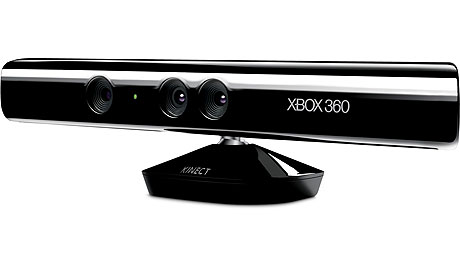Its official, Microsoft will be rolling out the Software Developers Kit for the (formerly Xbox 360 only) Kinect for PC users, so that software and games engineers can make some glorious PC Games and software to use with the accessory.
Kinect has been a huge focus for Microsoft and its Xbox 360 gaming platform for the past few years, and it appears that Bill Gates’ company is now looking to expand the hardware into its other big business area; home computing.
Since the Kinect’s release last year, the device has had many budding hackers and software whizz-kids using the system for hacked games and coming up with new ways to use the Kinect motion controller.
Microsoft has always been open with developers about its plans for the PC and Kinect systems and today the company sent out an email from Microsoft site channel9 inviting people to tune in to an event at 5:30pm UK time.
The announcement states:
“You are invited to tune into a press announcement tomorrow (Thursday 6/16) 9:30-10:00am PT for an important message from Microsoft Research regarding the Kinect technology,” said the email.
“Following the announcement, we will continue with Ch9 Live broadcast starting from 10:00am-2:00pm PT.”
The potential for Kinect is clear on the PC but with the SDK coming it will certainly open many doors for PC users who want to have a more involved PC experience.
Check out all the information in the full press release:
REDMOND, Wash. — June 16, 2011 — Microsoft Corp. today announced the availability of Kinect™ for Windows® Software Development Kit (SDK) from Microsoft Research, a free beta release for noncommercial applications. The SDK is designed to empower a growing community of developers, academic researchers and enthusiasts to create new experiences that include depth sensing, human motion tracking, and voice and object recognition using Kinect technology on Windows 7. The Kinect for Windows SDK can be downloaded today at no cost for development of noncommercial applications at http://research.microsoft.com/kinectsdk.
To celebrate the release, Microsoft invited a select group of developers to the Microsoft campus in Redmond, challenging them to test the limits of their imaginations using the SDK in a Channel 9 Live 24-hour coding marathon (aka “Code Camp”). Working with the new toolkit and a vast array of hardware, developers are expected to build concept applications across a diverse range of scenarios, including, potentially, healthcare, science and education. Projects from Code Camp will be shown in a live broadcast on Channel 9 today from 10 a.m.–2 p.m. PDT, and highlights can be found on the Microsoft News Center at http://channel9.msdn.com/live.
Developers attending the Code Camp event in Redmond, Wash., on June 15-16 talk about applying Kinect in experiences outside the gaming world using the free, non-commercial Kinect for Windows Software Development Kit (SDK) beta that became available today.
“The Kinect for Windows SDK opens up a world of possibilities to developers who want to unleash the power of Kinect technology on Windows,” said Anoop Gupta, distinguished scientist, Microsoft Research. “We can’t wait to see what this community will create as we work together to build more natural, intuitive computing experiences.”
The Kinect for Windows SDK, which works with Windows 7, includes drivers, rich APIs for Raw Sensor Streams, natural user interfaces, installer documents and resource materials. The SDK provides Kinect capabilities to developers building applications with C++, C# or Visual Basic® using Microsoft® Visual Studio® 2010.
Features of the SDK include the following:
- Raw Sensor Streams. Developers have access to raw data streams from depth sensor, color camera sensor and the four-element microphone array. These will allow them to build upon the low-level streams generated by the Kinect sensor.
- Skeletal Tracking. The SDK has the capability to track the skeleton image of one or two people moving within the Kinect field of view, making it possible to create gesture-driven applications.
- Advanced Audio Capabilities. Audio processing capabilities include sophisticated noise suppression and echo cancellation, beam formation to identify the current sound source, and integration with the Windows speech recognition API.
- Ease of installation. The SDK quickly installs in a standard way for Windows 7 with no complex configuration required and a complete installer size of less than 100 MB. Developers can get up and running in just a few minutes with a standard standalone Kinect sensor unit widely available at retail.
- Extensive documentation. The SDK includes more than 100 pages of high-quality technical documentation. In addition to built-in help files, the documentation includes detailed walkthroughs for most samples provided with the SDK.
Microsoft intends to release a commercial version of the SDK at a later date; details will be released when they are available. The conversation is on Twitter under the hashtag #Kinect_SDK.
